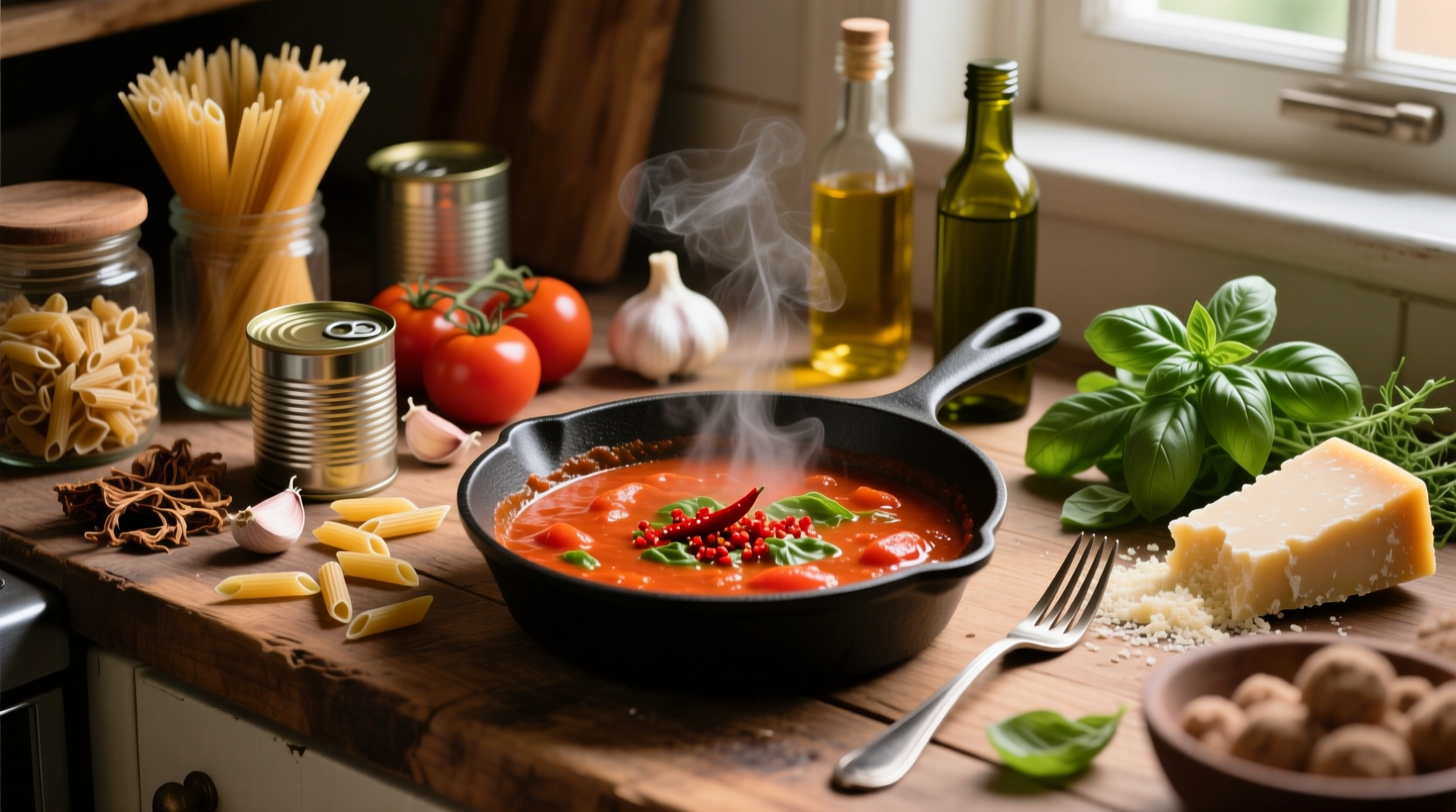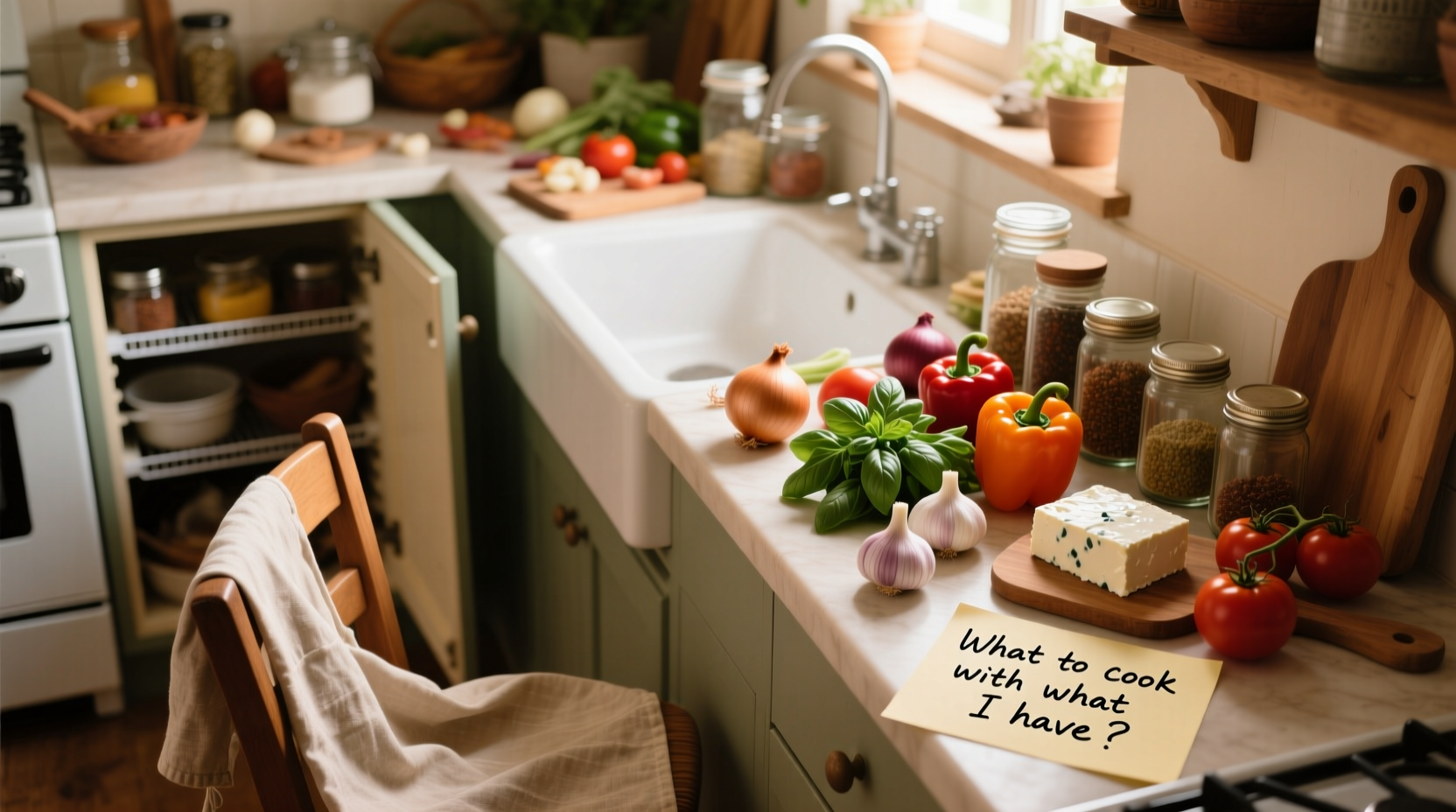Assess Your Pantry in 5 Minutes
Start by categorizing what you have into three essential groups. This systematic approach reveals meal possibilities you might overlook:
| Category | Common Items | Meal Potential |
|---|---|---|
| Starch Base | Rice, pasta, potatoes, bread, tortillas | Forms meal foundation (60% of dish) |
| Protein Source | Eggs, canned beans, tuna, frozen chicken | Adds substance and nutrition (25% of dish) |
| Flavor Elements | Oil, vinegar, spices, garlic, onions | Transforms basic ingredients (15% of dish) |
According to USDA food safety guidelines, properly stored pantry items maintain quality for specific periods. Dry beans last 1-2 years, canned goods 2-5 years, and dried pasta 1 year when stored in cool, dry conditions (USDA Food Safety and Inspection Service). This means most "empty" pantries actually contain viable ingredients.
The 3-Component Meal Framework
Professional chefs use this same approach when creating dishes under constraints. Antonio Rodriguez, who's worked in both Michelin-starred restaurants and casual eateries, explains: "The magic happens when you understand how these elements interact. A simple starch becomes extraordinary with the right flavor profile."

What to Cook With Common Combinations
Most households have at least one of these ingredient trios. Here's what to cook with them:
When You Have Eggs + Bread + Cheese
Create a savory French toast by whisking 2 eggs with 2 tablespoons milk (or water), salt, and pepper. Soak stale bread slices, then pan-fry in butter until golden. Top with grated cheese that melts beautifully like cheddar or Monterey Jack. This transforms yesterday's bread into a satisfying meal in 15 minutes.
With Canned Beans + Rice + Spices
Combine 1 cup cooked rice with 1 can rinsed beans, 2 tablespoons olive oil, and spices like cumin and smoked paprika. Heat through and finish with vinegar or lemon juice. This combination provides complete protein and satisfies hunger longer than either ingredient alone.
Limited to Pasta + Canned Tomatoes + Garlic
Simmer crushed tomatoes with minced garlic in olive oil for 10 minutes. Toss with cooked pasta and a splash of pasta water to create an emulsified sauce. Add red pepper flakes if available. This technique, used in authentic Italian cucina povera ("poor kitchen"), creates depth from minimal ingredients.
Ingredient Transformation Techniques
When resources are limited, these professional techniques maximize flavor:
- Dry toast spices in a pan before using to intensify flavors 300% (University of California flavor chemistry research)
- Create "instant stock" by simmering onion skins, carrot tops, or herb stems in water for 15 minutes
- Transform canned goods - drain beans, then sauté with oil and spices until slightly crispy for texture contrast
When You Only Have Basic Staples
Food waste statistics show 30-40% of food supply gets discarded (FAO Food Wastage Footprint report). Instead of letting items expire, use these emergency meal solutions:
Only Have Flour, Water, Salt?
Mix 1 cup flour, 1/2 cup water, and 1/4 teaspoon salt to create pasta dough. Roll thin, cut into ribbons, and boil for 3 minutes. Toss with olive oil and whatever seasonings you have.
Just Eggs and Spices?
Make spiced scrambled eggs: Whisk 2 eggs with 2 tablespoons water, salt, and any available spices. Cook slowly over medium-low heat, stirring constantly. The water creates steam for fluffier eggs.
Troubleshooting Common Scenarios
Professional cooks face ingredient limitations regularly. Here's how to handle frequent challenges:
"I Only Have One Fresh Vegetable"
Maximize impact by using the entire vegetable. With one zucchini: slice thin for "zoodles" with sauce, dice small for fritters with egg and starch, or roast chunks to top grain bowls. Different preparations create distinct meals from the same ingredient.
"Everything Tastes Bland"
Layer flavors strategically: acid (vinegar or citrus) first to brighten, then salt to enhance, finally fat (oil or butter) to carry flavors. This sequence creates depth even with limited ingredients.
When Substitutions Work (and When They Don't)
Understanding ingredient chemistry prevents meal failures. These boundaries matter:
- Works: Using yogurt instead of sour cream (similar fat content and acidity)
- Works: Substituting white wine vinegar for apple cider vinegar (adjust sweetness)
- Doesn't work: Replacing baking powder with baking soda (different chemical reactions)
- Doesn't work: Using olive oil instead of butter in baking (changes texture fundamentally)
These context boundaries come from culinary science research at the Culinary Institute of America, showing why some substitutions succeed while others fail.
Make It Your Own: Building Confidence
The goal isn't just surviving with limited ingredients—it's developing kitchen intuition. Start with these three steps:
- Identify one flavor profile you enjoy (garlic-herb, spicy-sour, sweet-savory)
- Find ingredients supporting that profile in your current pantry
- Build your meal around that flavor foundation
Within weeks, you'll recognize patterns and create meals without recipes. This approach transforms cooking from following instructions to creative expression—using exactly what you have.











 浙公网安备
33010002000092号
浙公网安备
33010002000092号 浙B2-20120091-4
浙B2-20120091-4